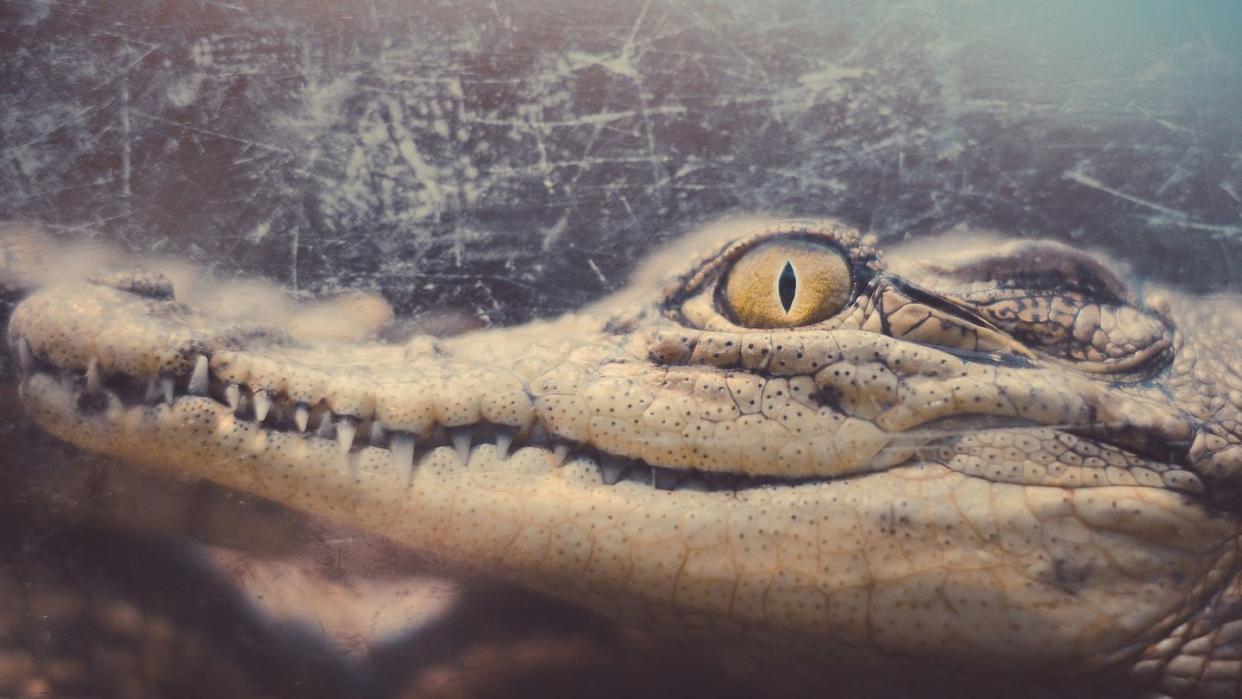Scientists Opened Up a 3,000-Year-Old Crocodile. The Contents Left Them Awestruck.

"Hearst Magazines and Yahoo may earn commission or revenue on some items through these links."
Ancient Egyptians regularly mummified crocodiles in elaborate ceremonies in dedication to their crocodile god Sobek.
A new study of one of these crocodiles reveals details about the animal’s death and the methods through which Ancient Egyptians captured these fearsome predators.
Using x-ray and CT-scanning technologies, archaeozoologists can now explore the insides of these animals, which, unlike human mummification, have their organs intact.
To uncover the mysteries of the past, scientists employ a wide variety of techniques to get at the truth. Climate scientists drill two-mile-long ice cores to glimpse Earth’s past climatic conditions. Paleontologists analyze sediment layers to visualize the physical timeline of past epochs. And while Egyptologists similarly deploy lots of state of the art archeological techniques, sometimes it’s best to just use a mummified crocodile stomach.
That’s exactly what researchers at the University of Manchester did with a 3,000-year-old, 7.2-foot-long crocodile corpse, kept at the Birmingham Museum and Art Gallery and known simply as 2005.335. Although Ancient Egyptians typically removed organs when mummifying humans, crocodiles sacrificed to the crocodile god Sobek kept their innards intact, and this small deviation from tradition allows scientists in the 21st century to analyze the organs to unlock mysteries of this strange sacrificial ritual.
To preserve the specimen for future display, the research team deployed non-invasive techniques, such as x-rays and CT scanning, to catalog the contents of the crocodile’s stomach. Among the ancient gastronomic detritus, scientists found some usual suspects called gastroliths, which are small stones crocodiles regularly swallow to aid digestion. However, among these stones were also intact fish baited to a bronze hook. Because the time frame between the croc’s last meal and its death was so short—the gastroliths hadn’t reached the stomach yet—the crocodile was likely intentionally caught by Ancient Egyptians to be part of a sacrificial ceremony to Sobek.
“Whereas earlier studies favored invasive techniques such as unwrapping and autopsy, 3D radiography provides the ability to see inside without damaging these important and fascinating artifacts,” University of Manchester archaeozoologist Lidija McKnight, co-author of a study published in the journal Digital Applications in Archaeology and Cultural Heritage, said in a press statement.
While keeping the long-dead crocodilian intact, McKnight and her team also “virtually” recreated the bronze hook lodged in the specimen’s stomach for future museum displays. McKnight says that in the past Ancient Egyptians likely used hardened clay to create a mold and then poured molten metal over a charcoal fire to create the hook.
“Despite the passing of several millennia between the production of the ancient fish hook and the modern replica, the casting process remains remarkably similar,” McKnight said in the press statement.
Although 2005.335 met a grisly fate, crocodiles were actually revered in Ancient Egyptian society for their strength but also their displays of gentleness (especially with their young)—but perhaps they were too revered. Archeologists believe that this Nile-based culture, in which the crocodile was the top predator (besides humans, of course), likely bred the animals specifically for sacrificial purposes by “crocodile cults.” In the Egyptian town of Fayoum, which was the center of worship for Sobek, experts have uncovered thousands of mummified crocodiles, many of them babies.
But thanks to these long-ago sacrifices, the story behind these ancient mummified crocodiles is finally spilling its guts.
You Might Also Like

